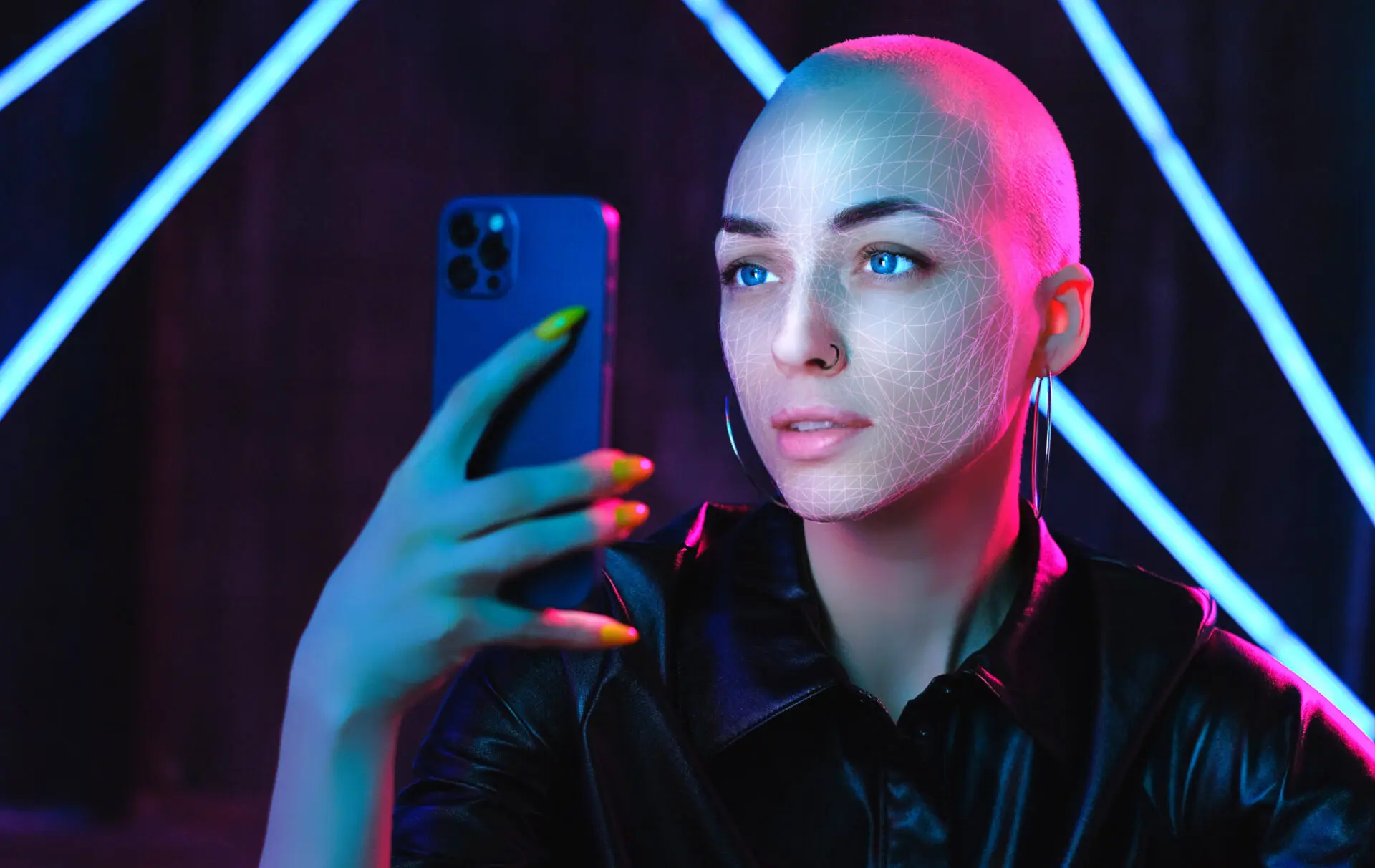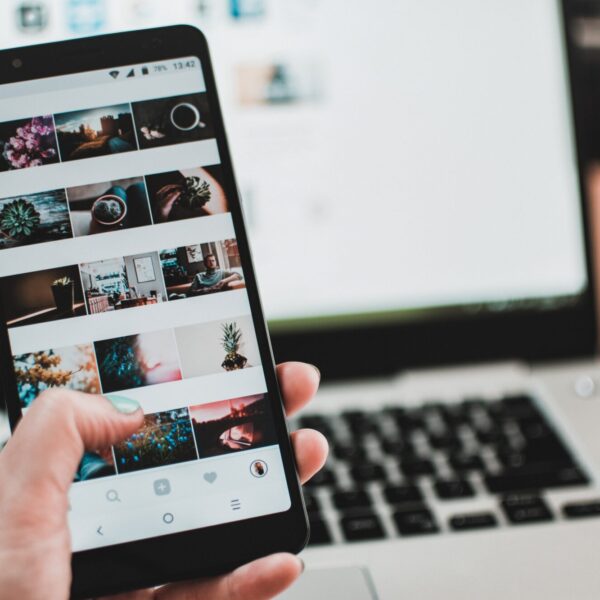Virtual Influencers – The future of digital marketing?

They present themselves in the latest designer clothes, take a selfie in front of famous landmarks and eat our favorite dishes. It takes a second look to realize that they’re not actually real people. We’re talking about virtual influencers, who have been generating an ever-growing presence on social media platforms for a few years now.
But what exactly is behind virtual influencers and how can companies or brands benefit from them?
WHAT ARE VIRTUAL INFLUENCERS?
Anyone who is on social media channels will certainly know them: the so-called influencers. People who share aspects of their lives almost daily on social networks, such as Instagram and TikTok, and use their high follower numbers and influential presence to do targeted marketing for companies. For some time now, however, it seems to be beside the point for many whether a real person is in front of the camera or a computer-animated avatar can be seen.
Virtual influencers, also called computer-generated imagery (CGI) influencers, are playing an increasingly important role in social media, especially with regard to the Metaverse, which we already introduced to you in our last post. These are digital characters that are developed by designers, programmers and social media managers, given an individual personality and, thanks to graphics software, are usually almost indistinguishable from real people. With their human-like characteristics, they appear on their social media accounts in the first-person perspective and show the community their supposed lives:

In the meantime, computer-generated influencers can be found in large numbers on the web, and incidentally, they not only exist in deceptively real human form, but also in a wide variety of fantasy forms, such as this colorful sausage, which mainly entertains viewers with funny (dance) videos:


HOW ARE VIRTUAL INFLUENCERS CREATED?
Before a digital character can appear on social media platforms, some preliminary work is required. For example, to create a company’s own “corporate avatar,” you have to know the target group you want to address. Using data-based analyses, one tries to understand this group of individuals as best as possible: In addition to demographic characteristics such as age, gender, and marital status, psychographic characteristics that focus on needs, hobbies, and values are also relevant.
Based on this collected information, the personality of the avatars can be created accordingly. What should the character look like externally? What behavior is appropriate for the target group? What background or history does the avatar have? What kind of content could be interesting for the community? The detailed answers to such questions enable a well thought-out design, which can then be implemented accordingly by graphic designers and social media managers.
NEW MARKETING POTENTIALS FOR COMPANIES AND BRANDS
The question now is: How can companies or brands profit from virtual influencers?
Virtual influencers are becoming increasingly popular with brands, and for good reason. First of all, they are almost equally applicable as real influencers and offer some advantages for the company:
- Control: The client has complete control over how their brand is represented in sponsored content.
- Timeless: Human or biological limitations, such as the need to sleep, the natural aging process, and eventually their mortality are not present. Theoretically, the avatar can “work together” with the brand forever.
- Availability: Virtual influencers cannot get sick or are unavailable at certain times due to other circumstances.
- Regulations: Additionally, they remain completely unaffected by labor laws or safety regulations, which facilitates collaboration.
- Cost savings: According to some sources, on average real influencers are much more expensive per post. Additional costs for e.g. hotel stays or travel expenses are of course also eliminated.
In addition to some advantages, there are also potential disadvantages that need to be weighed:
- Authenticity: Knowing that the account is just a computer-generated avatar, followers might have concerns.
- Beauty standards: Computer-designed avatars that do not age, look flawless, are always top styled, can cause young consumers in particular to emulate unrealistic beauty ideals and cause low self-esteem.
- Emotions: Conveying emotions is a crucial role in influencing the market. Emotions can be created through videos and images, but virtual influencers have a harder time adding a moving human touch that real influencers can easily achieve.
- Scandals: While personal views and values that everyone holds cannot potentially lead to brand image damage in the case of virtual influencers, they are nonetheless not scandal-free. Calvin Klein’s campaign with Lil Miquela and Bella Hadid, for example, faced accusations of queerbaiting.

So far, we’re seeing more campaigns with virtual influencers in the fashion industry. In addition to the computer-generated Southeast Asian Maya, who was specially created by PUMA to market their Future Rider shoes, companies like Hugo Boss are already using popular virtual influencers with wide reach for marketing purposes:

According to the CEO of Hugo Boss, this is a way to reach new and especially younger target groups, and thus promote brand awareness in the future.
“It is our aim to excite new and younger target groups and turn them into fans of our brand. Both campaigns are therefore an important step in further boosting brand relevance and in reaching our goal to become a top 100 global brand in the years to come.”
Daniel Grieder, CEO of Hugo Boss
THE RISE OF VIRTUAL INFLUENCERS AND THEIR ROLE IN THE METAVERSE
A survey earlier this year, which polled more than a thousand Americans, found that more than half already follow at least one virtual influencer, and it’s mainly the younger age groups that are represented. How this will develop in the near future, also in other parts of the world, remains to be seen.

In light of the current metaverse, which enables global interactions between people in three-dimensional virtual worlds, whether in leisure or work environments, the new potentials should not be ignored.
Numerous brands are already experimenting with a presence in the metaverse, offering virtual products for sale, for example, or hosting events that can be attended online. Virtual influencers, who we now see mainly on social media platforms such as Instagram or TikTok, will also take on an increasingly important role in the metaverse. Their entire existence is already perfectly tailored to virtual reality in the metaverse.
CONCLUSION: ARE VIRTUAL INFLUENCERS THE FUTURE OF INFLUENCER MARKETING?
In conclusion, it can be said that influencer marketing is an essential part of the marketing mix of many companies. And as it turns out, this can also be successfully implemented with virtual influencers.
Whether the use of virtual influencers is now a decisive marketing opportunity that should be seized early as a company – especially in view of the growing metaverse – the future will show.



